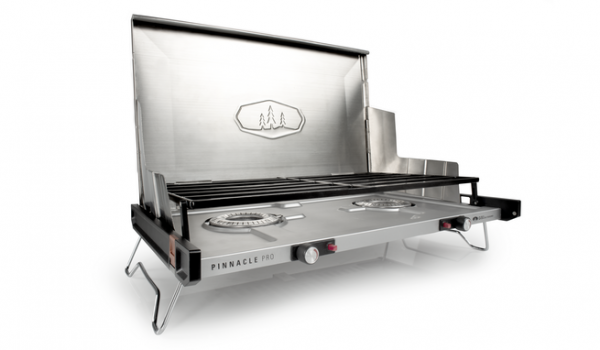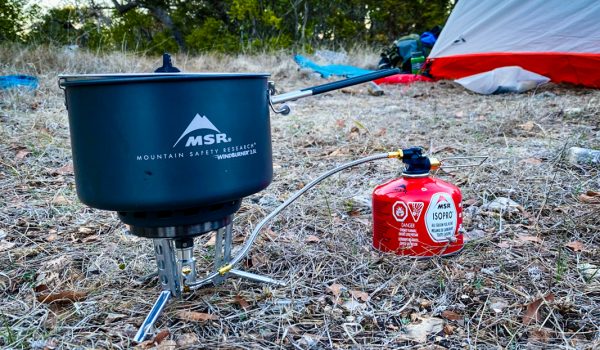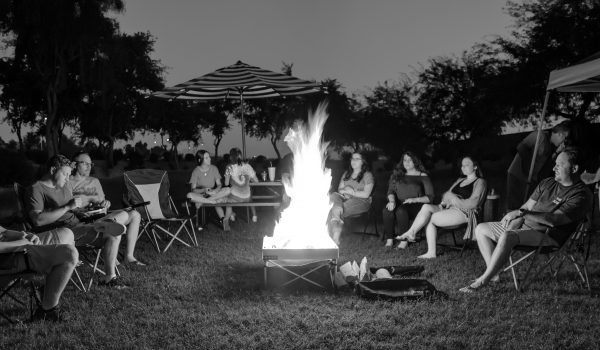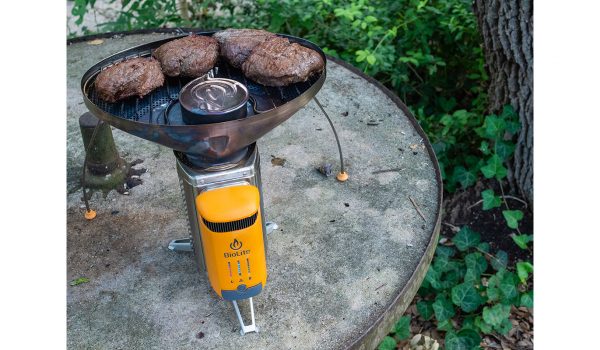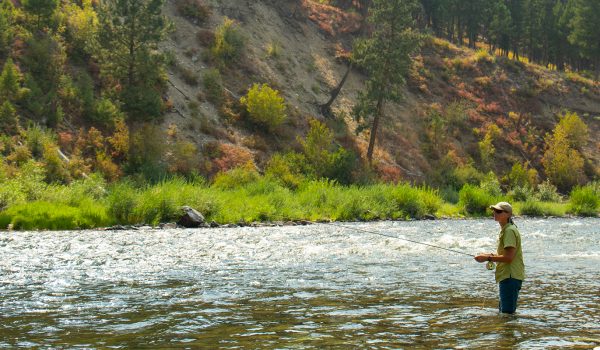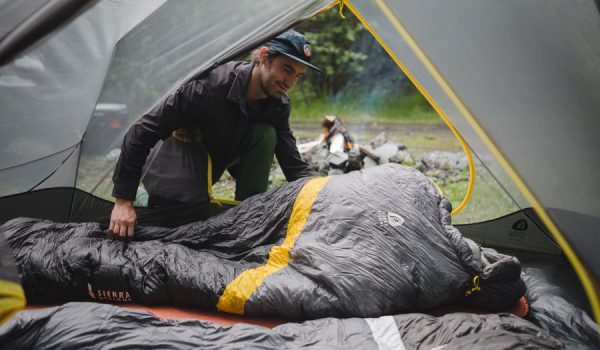
The Best Camping Stoves
Comprehensively testing the best camping stoves involves two methods. First, how well does the product do what it’s intended to do, i.e., how capable is it in cooking and preparing food? The second method deals with testing it as a piece of outdoor gear. This entails examining characteristics such as durability and performance in challenging environments and how a stove’s features and design influence that performance. This category consists of stoves for frontcountry car camping as well as stoves for backpacking and more remote wilderness pursuits.
Our reviews are divided into three categories: car camping stoves; liquid-fuel stoves; and canister stoves. Defining camping stove categories is quite challenging, as even major manufacturers like MSR, Optimus, and Primus can’t agree on an industry standard lexicon for their products. We took matters into our own hands, defining these categories like this:
Car Camping Stoves: typically not portable in backpacks or designed for foot-powered transport; these are propane-powered multi-burner stoves designed for campgrounds, picnic tables and parking lots.
Liquid Fuel Stoves: backcountry products often used in alpine environments across the globe where fuel availability varies. Fuel is purchased and transported in liquid form, then vaporized into a gas at the time of use. It can vary from white gas to unleaded or even diesel. However, as a relatively new feature, many in this category can switch from liquid fuel pump bottles to isobutane and gas-filled canisters, some without exchanging jets. But it’s their liquid fuel capability that puts them in this category.
Canister stoves: most commonly seen among backpackers and long-distance hikers, these include everything from the ubiquitous screw-on uprights to systems sold complete with companion heat exchanger pots, windscreens and other proprietary accessories. Some products in this category also boast fuel lines and rotating valve housings that allow for canisters to be separated from the stove itself and/or inverted when more fuel pressure or efficiency is needed.
There is potential for a great deal of overlap within the latter two categories, meaning that fuel type is the only true differentiator. Even then, the category is starting to get murky.
How to Select the Best Camping Stove For You
The Best Camping Stoves by: Craig Rowe
We would be remiss to not mention Natural & Alternative Fuel Stoves, such as those that use wood, tablets, alcohol and other forms of flammable substances to boil and cook.
The rise of long distance hiking and fast packing have pushed this once-fringe category into a small corner of the mainstream market. Granted, while many of them are proven, lightweight cooking tools and favorites among those who sport the hiker’s Triple Crown, they remain largely the domain of cottage manufacturers, survivalist-types and the most extreme gear junkies.
The category is no-doubt growing and many retail outlets are carrying these stoves because of their low cost and simplicity. In the American west, however, there is some push back against alternative and natural fuel stoves because of the uncontrollable open flame and difficulty extinguishing the fuel source.
Overall, for those seasoned long-haulers and fans of functionality over features, there are number of options in the alternative and natural fuel stove category. We limited this camping stove guide to car camping, liquid fuel and canister backpacking stoves.
The majority of products in this category are fueled by propane commonly sold in industrial green, bulky, football-sized canisters. They are made heavy from the thick steel required to sustain the compressed gas as a liquid. Some users have adaptors to fuel these stove from more cost efficient BBQ grill style propane bottles.
In turn, these camping stoves are not convenient to lug into the backcountry. Instead, this category is ideal for those who need to camp within range of their vehicles, prepare après-backcountry hut dinners and arrange bouldering basecamps tucked into the corners of the Alabama Hills. While features and packability vary, these stoves are meant to fry eggs on one side and mounds of butcher-fresh bacon on the other, not boil water in two minutes or disappear into the lid of your backpack. Here are our reviews of the best car camping stoves.
Liquid Fuel Stoves
Liquid Fuel Stoves are the workhorses of the backcountry kitchen scene, the stoves you see cooking for mountaineering outfitters at altitude and deep wilderness campers who need long-term efficiency and dependability.
This category requires a steeper learning curve to manage, and because of that, mastery of its lineup tends to serve as the mark of a seasoned outdoorist. Some can switch fuel types from white gas bottles to isobutane canisters with minimal handiwork while others require switching jets and pump parts with small wrenches.
The tubular aluminum bottles that most often accompany these products are typically filled with white gas, which can be found in any store that boasts even the most limited selection of outdoor sporting goods. However, when trips get really remote — Atacama Desert remote — the ability of liquid-fuel camping stoves to cook with an array of fuel types really comes in handy, a feature growing more popular with major brand names.
If you’re planning treks abroad, at high elevations, or in the depths of winter, a stove in this milieu should be high on your list.
Canister Stoves
This category includes stoves where a pressurized, non-reusable fuel canister is screwed into the burner unit. Despite how the fuel canister is attached, whether or not it comes with a companion pot to ensure optimum fuel efficiency, or in what form factor the stove, the energy source and the way it burns are universally the same. Weight, features, versatility and dependability will drive your selection.
Almost every online catalog and in-store display of camping stoves you come across will have these products front and center, and for good reason. The name of the game with canister stoves is simplicity. These stoves are typically small and very easy to use with minimal moving parts. They all use a universal valve connector design, the Lindal valve (named for the company that created it) which mates to a threaded male housing on the canister.
These stoves are relatively safe, compact, and ideal for hikers who cook simple meals or want hot water in a couple of minutes. They marry best to single-person pots that are typically sold in 1.5 liter volumes or less. You can find some with wider pot supports to accommodate frying pans and other larger cook pots.
The vast majority of the fuel mixes powering these stoves contain cocktails with various volumes of isobutane, butane and propane, each of which turn to liquid when pressurized in their canister. They again become a gas when released from the canister into the stove’s air entrainment chamber, or main tube. Those holes in the tube are not intended to reduce weight but instead to introduce oxygen to the fuel mix.
The percentage of propane in these mixes is kept at a minimum because it requires a lot of pressure for it to remain liquid, too much for the thin-gauge aluminum canisters.
Propane’s presence will be increased for “winter gas” mixes because its boiling point isn’t reached until -42 degrees F, thus making it better in colder climates. Many canister stoves may seem sluggish when the temps drop. That’s because the cold air impacts the canister’s pressure and thus the fuel’s performance. To combat this, manufacturers have started to include regulators on their stoves, which maintain a consistent internal pressure to reduce stove performance anxieties. Expect these features to push stove prices.
A decade or so ago, a company called Jetboil, now part of Johnson Outdoors, created a new take on the gas stove with its namesake Personal Cooking System, or PCS. In doing so, they created the canister gas subcategory of “heat exchanger systems.”
The flagship product boasted welded fins on the base of a tall and narrow 1-liter aluminum pot, or cook cup. They called this fin design a “heat exchanger,” and it drastically improved the flame’s wind resistance and fuel efficiency by increasing the surface area of the pot base, allowing it to heat its contents faster. The stove and pot were sold together, thus making the pot critical to the stove’s functionality and advertised performance.
The concept launched by Jetboil inspired almost every stove maker to follow-suit, and some did so with aplomb. In summary, the heat exchanger is a very common — and very effective — pot design that will be found in every store and online retailer you frequent.
Another subspecies of the gas stove is the remote canister stove. These products attach the gas canister to a length of fuel line instead of a top-mounted screw valve. The result is a low-to-the-ground profile and much more stable cooking base.
Many in this segment include rotating valves that empower the canister to be inverted, thus reducing the need for pressure to force gas to exit the canister and replacing it with good ‘ole fashioned gravity. This design’s intent was to encourage the use of simple, lightweight gas stoves in colder conditions, where low external pressure impacts the flow of gas from the upright canister.
Remote canister stoves tend to simmer better, perform in colder weather and provide hikers a more traditional backcountry cooking experience.
Selecting the best camping stove will come down to what and where.
- What type of food do you want to prepare?
- Where do you want to prepare it?
Some camping stoves are designed to be highly fuel efficient and maintain a hot, steady flame for prolonged cooking of multi-ingredient menus; ideal for slow, lakeside evenings and social backcountry camps.
Other camping stoves are designed primarily to boil water for rehydrating commercially packaged meals when a hiker is all about mileage and calories. Car camping stoves also have their own unique circumstances for use, like during overlanding and van-life adventures.
The following guide to selecting the best camping stove details five critical points that any level of gear-loving outdoor enthusiast should consider before committing to your next piece of flameware.
1. What Type Of Camping Will You Be Doing?
It’s critical when choosing a camping stove to consider your trip destination and goals.
If you’re going to remain in the frontcountry within a campground or at least within range of your truck and a few gear bins; or you do a lot of parking lot après ski with your crew, you’ll do well to consider one of the many dependable, multi-burner propane car camping stoves we’ve reviewed.
For those who plan on hitting the trail early and hiking past sunset only to wake up and do it all over again, a compact canister stove will be your best option. The majority of those we’ve reviewed pack away neatly, don’t cost much and offer an array of cooking versatility despite their limited use of fuel types.
That being said, canister stoves are not solely the domain of the light and fast hiker. Traditional backpackers have used these proven models for decades to warm water for rehydrating meals and firing up their morning joe when watching the dew dry off the grasses. They are also ideal for first-time backpackers because of their ease of use and the wide availability of isobutane canisters.
Prefer life above treeline? Liquid fuel stoves are ideal cold weather cooking companions because the fuel types they require perform better in the cold than pre-pressurized canisters. The liquid-fuel stoves are critical for those traveling in remote lands where fuel availability is unknown. Many of these are also multifuel stoves, capable of burning diesel, kerosene or the like. The more fuel options you have, the better. These are popular products with professional guides and backcountry outfitters because most of them can be maintained in the field and allow for relatively easy troubleshooting.
2. Solo or Social?
Car camping stoves are ideal for big groups. With two or more burners, they are designed to hold large pots full of chili and beer-boiled brats, and they stand firm on picnic tables, makeshift campsite tables or even come with legs and stands of their own. The larger propane bottles hold plenty of fuel for cooking big meals for big groups.
Canister stoves can also function well within a group environment, specifically the subcategory of remote canister stoves. In most cases, these products’ burners sit low to the ground for improved stability, improved wind resistance, and tend to come with wide pot supports capable of holding 4-quart pots. Group meals tend to be more advanced, and thus often need to simmer for minutes on end, a capability for which only canister stoves with regulators can handle.
If you fly solo though, standard screw-on-top canister stoves or the heat exchanger system stoves will be your best trail companions. They’re meant to boil water quickly and prop up smaller pots and cook mugs.
Liquid fuel stoves are popular among guides, alpinists, and winter campers because they’re efficient and their bottles can hold a week’s worth of fuel.
3. Activities
It’s a safe assumption that unless you plan to bring a pair of llamas or drag a sled, car camping stoves won’t overlap well with trip types that already require extensive gear or heavy hauls miles deep into the woods. They’re too heavy. Thus, your choices quickly narrow.
Climbing, for example, is all about the stuff that keeps you safe — and that stuff is rarely lightweight. This means that everything not specifically designed to prevent a ledge fall needs to be compact and hassle-free. Obviously, a small canister stove and accompanying canister or two will help minimize the intrinsic burden of a double trad rack or harness full of ice screws.
In remote environments where activities lead to greater risk, the capability to rapidly warm water or have a meal ready in minutes might mean the difference between a rest day and another telling of Touching the Void.
Other activities that coincide with canister stoves include bikepacking, multiday ultrarunning, big wall climbing, ski touring and backcountry kayaking.
If your backcountry endeavor includes a Baja basecamp with a couple of down days waiting for onshore winds to relax, then a liquid-fuel stove makes sense. Products herein marry well with down time and the desire to prepare meals to pass the time. They offer a great balance of low weight and cooking capacity. Hut skiing, mountaineering, horse packing, photography, and backcountry fly fishing offer opportunities to tote along a liquid fuel stove.
That leaves car camping stoves to casual frontcountry camping weekends, raft trips, van-life missions, weeks in Camp 4 and parking lot après ski.
4. Menu
You can cook just about anything on every stove in each category. However, some are better at certain things, such as rapidly boiling water in windy environments, or steadily simmering a soup for 15 minutes.
For example, the National Outdoor Leadership School is heavily entrenched with liquid fuel stoves because its students are often trekking in remote, unpredictable places. It’s also because they teach true backcountry cooking, showing students how to make actual many-ingredient meals, including breads, cakes, eggs, sauces and rich pasta dishes.
Many backpackers, especially today’s modern fast-packers, have little time for anything other than walking and sleeping. If it can’t cook in a couple of minutes, it won’t be cooked at all. Naturally, canister stoves are all but ubiquitous in this setting. The more compact the better. This is also where you’ll come across the occasional natural and alternative fuel stove.
Simple, high sodium and dense protein meals can be stirred up quickly in a small pot sitting on a small stove. Name brand, store-bought soups, pasta sides, potatoes and anything with the word “instant” splashed across the label will no doubt be accompanied by a stove in this category.
Grab a silly Skymall apron, tongs, and your favorite lukewarm lawnmower brew, because car camping stoves are for comfort foods, Pinterest recipes, and meals that take two beers’ time to prepare. After all, in scenarios where you’re toting along heavy propane jugs, it’s not really about the meal, it’s about everything surrounding it. These stoves are for your hamburgers, steaks, wings and vats of bubbling chili, because no one cares about calories when camping.
5. Price
Price becomes a factor within each category, as size and general cost of manufacturing alone logically dictate that canister stoves will be the most affordable, and car camping products the least. There are some high-end liquid fuel stoves that can overlap with the lower end of car camping stoves, and many liquid fuels will make perfect sense in frontcountry settings.
Price within each category is driven by a product’s features, an umbrella term in this case referring to quality of materials, fuel delivery mechanics (screw-on vs. remote vs. radiant), pot use flexibility and in general, those inherent design choices that make a product what it is. By nature, a BMW M5 will cost more than a Subaru Outback, simply because everything that requires it to be an M5 is more expensive. In turn, an MSR Windburner costs more than a SnowPeak GigaMax, They’re both canister stoves, but with rather disparate backcountry applications.
Car camping stoves will demonstrate the widest range of in-category price discrepancy. Stalwarts like Coleman can sell a two-burner for $50 because it’s as tightly bound to the idea of camping as hot dogs on a stick, and therefore appeals to an enormous, casual camping demographic. Primus, on the other hand, has birthed a line of sharply designed, feature-rich two-burner stoves that just as at home under the kitchen tent of a luxury African Safari tour operator as they do on the tailgate of a Packers’ fan. Expect to pay over $200 for some of their new stoves.
Choosing how you eat when outside has grown pretty complicated. Gear manufacturers, who we love dearly, are always tweaking and testing and doing all kinds of imaginative things with their product lines. Every innovation begets an innovation, and everything from social media to ever more exotic, high-risk wilderness expeditions is driving them.
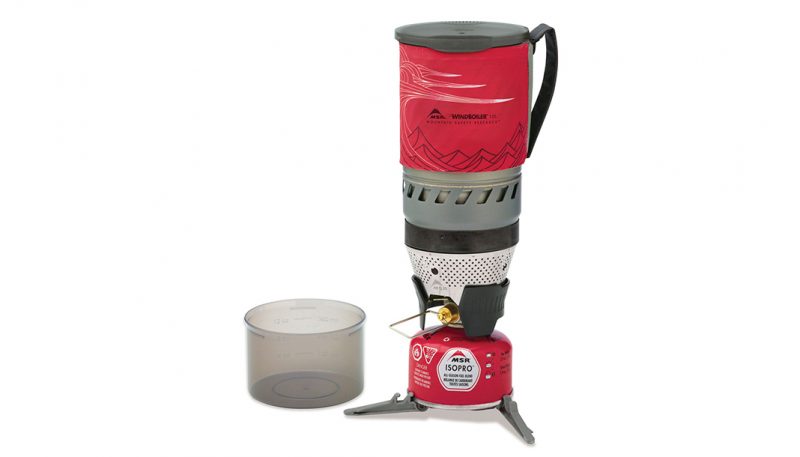
MSR may have very well outsmarted itself with the WindBurner. While using much of the same tech as the Reactor, the WindBurner has enough built-in features to muscle its wider, fatter siblings out of shelf space. It’s the fastest and most weather-resistant backcountry boiler tested.

Given its weight, efficiency, performance in wind and average boil time, the Soto WindMaster is the superior stove in this category. It is pricey, but you do get what you are paying for. The micro-regulator is an impressive inclusion on a stove of this size and it performs as advertised, maintaining boil time consistency and performance in temperatures most canister stoves can't handle.
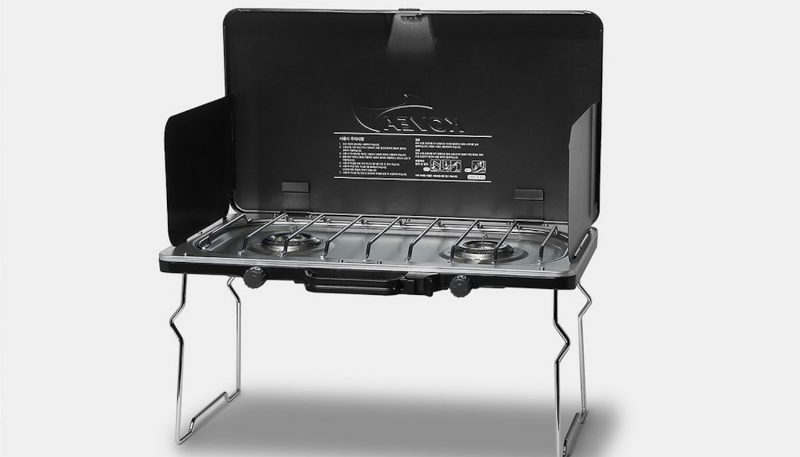
The Kovea Slim Twin is a sleek, practical, and versatile dual burner camp stove. The price is fair given its all-around durability and features, and it nicely balances power and flame control. At barely 2.5 inches high when folded, Kovea has created a very portable product that can slip in between and under camping supplies and into gear bins and rooftop boxes. The Jetboil Genesis is a worthy competitor but has a hard time keeping up with the multi-fuel versatility practical features of the Slim Twin.
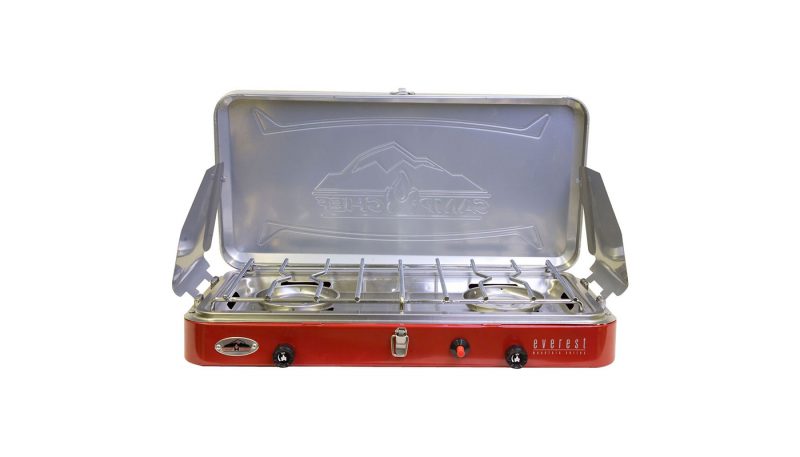
The Camp Chef Everest is the stove you buy to keep in your camper or truck kitchen, where it can accumulate crumbs in its hinges, color on its grates, stickers, and a few dents. Not only is it the most affordable stove in the test, it’s the closest to your “Father’s Camp Stove” we found. Its simplicity and bulk can run contrary to today’s nimble, sleep-anywhere-on-a-whim road-tripper, but that’s not the market a company called Camp Chef is after. I’m not a fan of how the fuel line coupling mates with the stove’s fuel line, but until manufacturers find a way to make a better system, like the Kovea Slim Twin’s, more ubiquitous, we’re all stuck with screwing around with it for a minute until it catches safely and we can cook. The Everest will also likely take up the entire end of a picnic table, so expect the propane to dangle in space and to keep cookware and ingredients on the seat or behind it. However, it’s ideal for a truck tailgate and multi-table kitchen set-ups, and overall, an affordable, family-ready camping stove.

MSR may have very well outsmarted itself with the WindBurner. While using much of the same tech as the Reactor, the WindBurner has enough built-in features to muscle its wider, fatter siblings out of shelf space. It’s the fastest and most weather-resistant backcountry boiler tested.

Given its weight, efficiency, performance in wind and average boil time, the Soto WindMaster is the superior stove in this category. It is pricey, but you do get what you are paying for. The micro-regulator is an impressive inclusion on a stove of this size and it performs as advertised, maintaining boil time consistency and performance in temperatures most canister stoves can't handle.
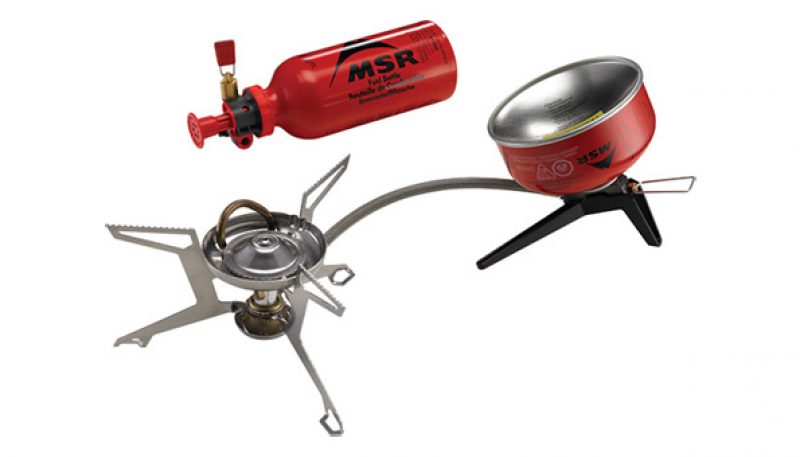
The MSR Whisperlite Universal is a fast and highly practical stove that is effective in wind, cold and at altitude using canister-based or liquid fuels. It should be at the top of any mountaineer or backpacker’s gear list.
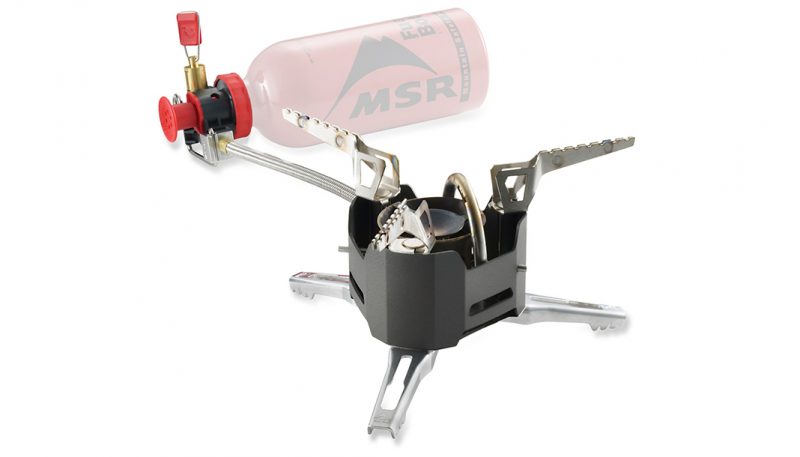
The XGK EX’s longevity in the market is a direct result of its durability and maintenance simplicity. Having to adjust for alternative fuel types is not as easy as it is with the Kovea Booster +1, which requires no mechanical replacement of the jet. The XKG’s stability and no-hassle set-up make it ideal for larger pots on varied terrain. Its short, rigid fuel line can make fuel bottle placement a challenge. It is heavier than others in its category but it’s meant to serve in a kitchen for an extended basecamp, not packed up every morning. This stove doesn’t have wow with bells & whistles nor does it boil water in under two minutes. What it does do is work every time you need it to.







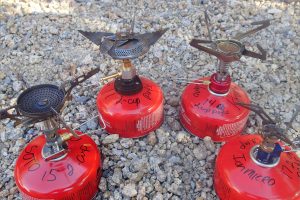
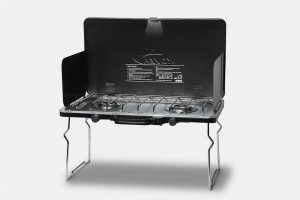


 92
92 


